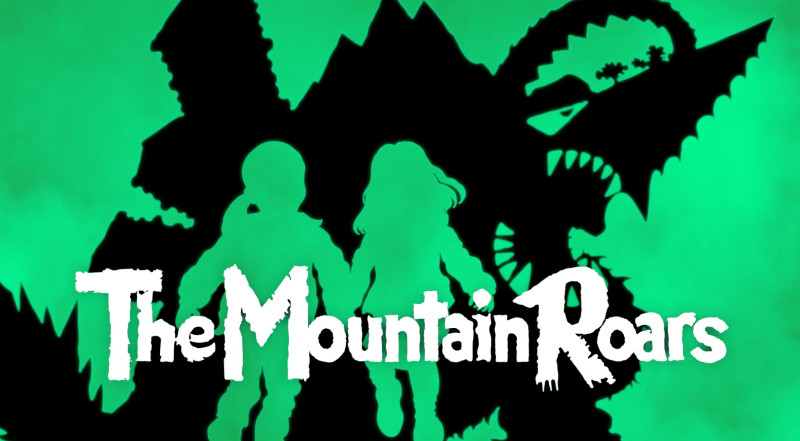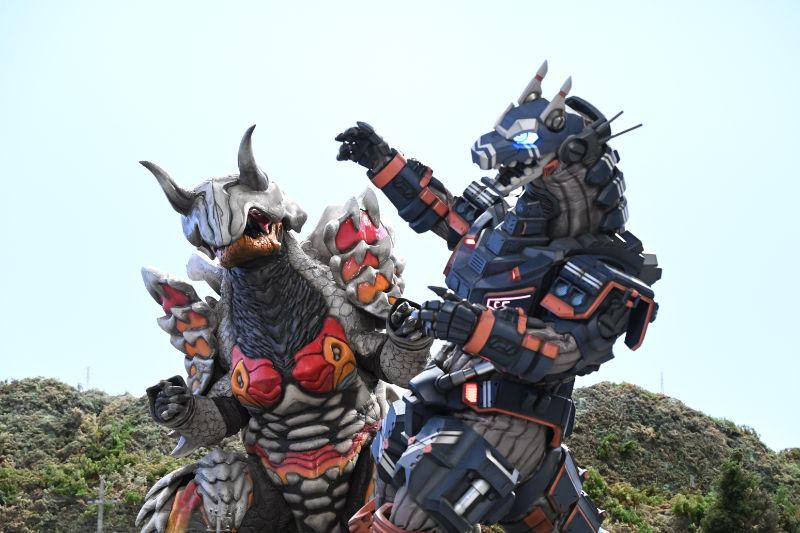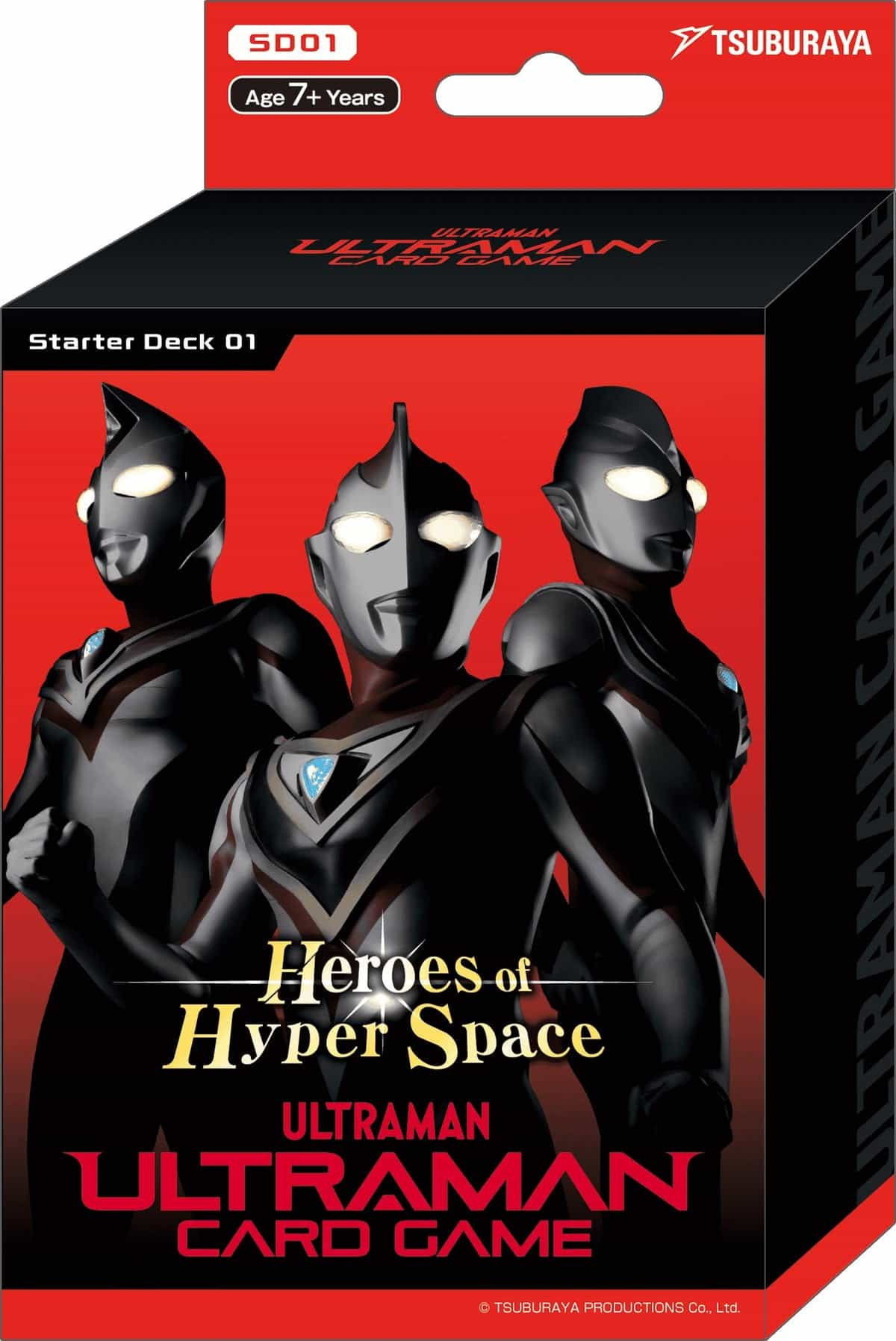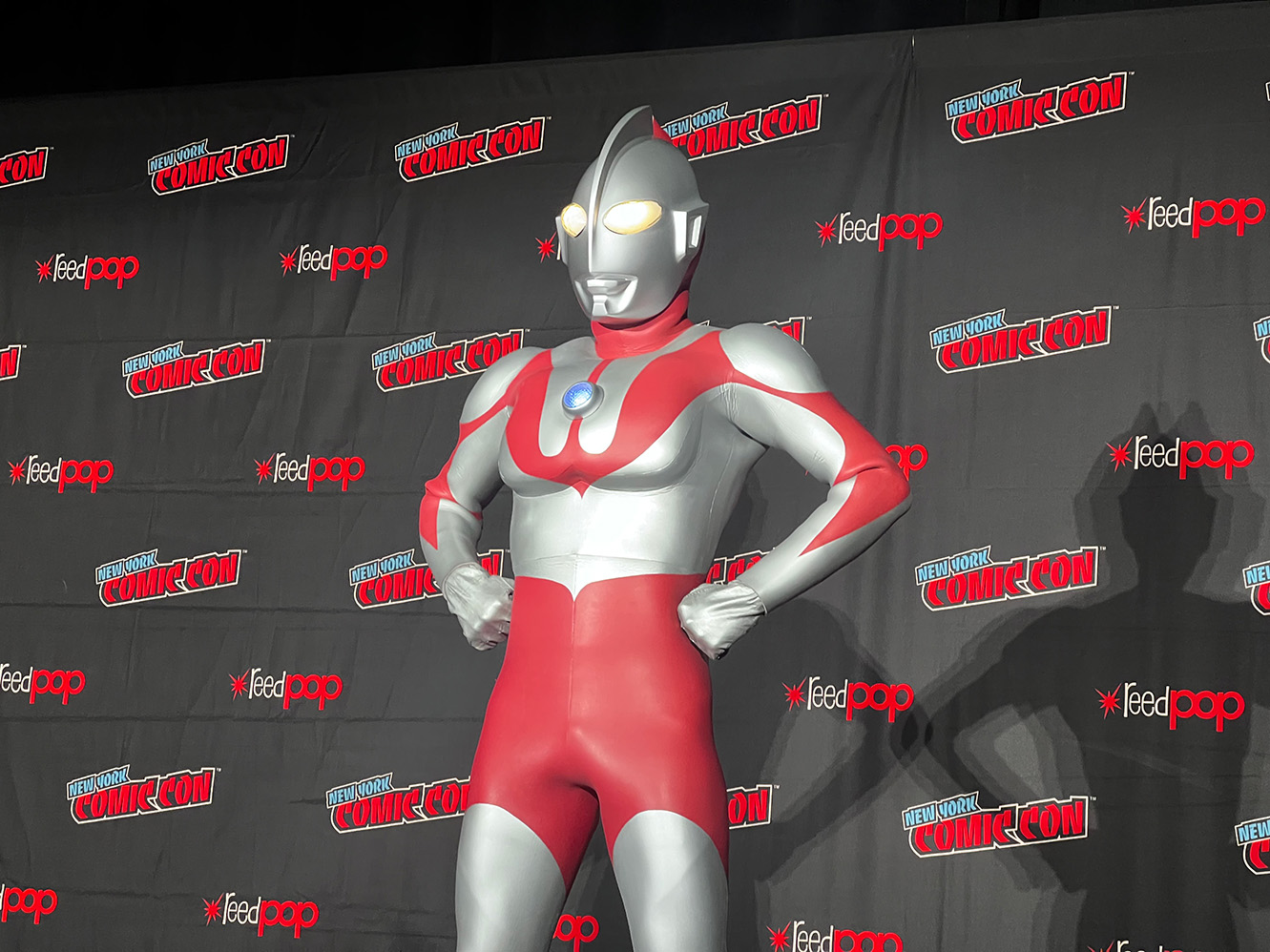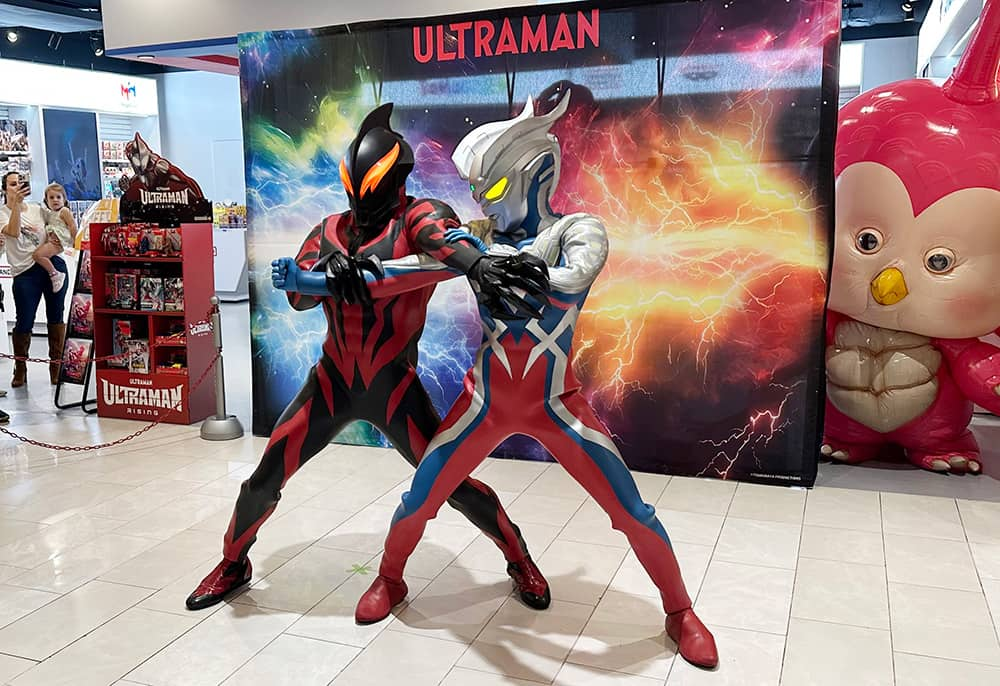Hello and welcome, Ultraman Connection readers! We’re only a month into its airing, but so far Ultraman Blazar has established itself with a remarkable blend of classic Ultraman styles, along with interesting innovations and nuances to fit its unique context. This was on full display last week as we witnessed a thrilling espionage drama unfold around SKaRD member Emi Aobe. That drama also highlighted the courageous optimism forming one of the most recognizable core ideals of the franchise. In this episode, Blazar tackles another classic trope within Ultraman stories, which takes the SKaRD team out to a rural village, and back to the past as they investigate ancient legends of a slumbering Kaiju.
But before we get further into the legends they uncover, we should warn you that this article contains open spoilers for episode 5, “The Mountain Roars”. Take the opportunity to go catch up if you haven’t already, before continuing below!

Almost every episode of Blazar to this point opens with a Kaiju attack, after which the SKaRD team springs into action in order to counter and defeat it. The threat they faced this week started out hidden, although it made itself known with earthquakes interrupting crucial tests of a new weapons system. The “Mega Shot” is a massive set of railgun placements, touted to be an important breakthrough for SKaRD, allowing them to take down Kaiju with even more force. Everyone seemed impressed by their firepower, but in the rush to install and begin testing the guns, SKaRD’s support team bulldozed through a shrine on the mountainside.
Nobody understood the importance of that shrine, except for Anri Minami’s childhood friend, Mizuho. Anri herself moved away from the town when she was in middle school. Now, as an adult, she only thought that the shrine and its customary prayers were just that — a local custom, with no real significance. Mizuho had her own family legends stating otherwise, and scrolls which depicted the connection between the shrine and an ancient “guardian deity” named Dorgo. She feared the commotion and destruction of the shrine would set the Kaiju on an unstoppable rampage, but no one else — not even Anri — took her warnings seriously.

The bad news is that Mizuho was eventually proven right. The good news is that Dorgo’s awakening, and subsequent attack, provided the evidence to finally convince SKaRD that they made a big, mountain-sized mistake. Thankfully, the team figured out how to pacify Dorgo and send him back to his slumber with more help from ancient legends. By restoring the shrine and setting its object of worship back in its proper place, they stopped his rampage without being forced to kill the town’s guardian.
On the surface, it might seem odd that this week’s review requires a spoiler warning, because it features a kind of plot which seems to happen once per season in Ultraman. There was a lot of material to choose from when deciding what to discuss in reference to this week’s episode, thanks to this long pedigree. An early, and probably the most famous, case of a Kaiju which becomes a deadly threat when woken up comes from the original 1966 series with the “Monster Highness” himself, Gomora!

Gomora was an ancient Kaiju which slept peacefully underground… until a group of scientists decided to unearth it for study, and to put on display at a museum. When the project inadvertently woke up the Kaiju, it took two episodes, the destruction of a scale model of Osaka Castle, and a desperately brutal fight which almost killed Ultraman to put the monster back down — permanently.
It’s a tragic story, purposefully so, highlighting the dangers that come from intruding into the natural balance of the world around us, without understanding it first. Thankfully, this week’s episode of Blazar isn’t nearly so dark. The lighter tone — and a happier, nonlethal ending — reminded me instead of a more recent series, Ultraman X. Specifically, this episode has a lot in common with episode 10 of that show, which introduced the plant-like Kaiju Houlinga, and Sakane Village, which prospered from its presence as a guardian deity.

On the surface, Sakane Village presents an idealistic society where human beings can coexist with Kaiju, instead of seeing them only as threats to be killed. That might seem like a lesson the characters in Blazar could learn, right? But many of the townsfolk — and especially the town’s mayor — only saw Houlinga as a tourist attraction, and not as a living being to be treated with care or respect. Stated a different way, they only cared about Houlinga as long as it was useful and convenient for the village, rather than truly striving to understand the creature.
Of course, this backfired when Houlinga appeared to become lethargic and sick. The village feared that its tourist economy would dry up along with the monster. When the defense team featured in the show, XIO, tried to treat Houlinga to “cure” it without understanding its behavior first, they accidentally made matters worse! Houlinga was riled up by the medicine, and became a destructive threat rather than a peaceful guardian of the town.
One person in the village did understand Houlinga and formed a connection with it — a young girl named Hana. Thanks to her understanding, and the unlikely friendship between her and the Kaiju, XIO figured out how to calm the monster back down. Instead of just stopping a threat with lethal force, they were able to restore the balance of nature which supported both the people of the village, and the land which they all rested on.


The important similarities between Ultraman X and Blazar go a lot deeper than just elements of the plot — which shouldn’t be surprising considering both shows are directed by Kiyotaka Taguchi! I also think both of them have a lot of themes in common, and the strongest one is this emphasis on understanding Kaiju rather than only trying to eliminate them from our world. Taguchi himself has even described the main theme of Blazar as exploring “communication”. But this theme doesn’t only apply to its depiction of the challenges of communication between Ultraman Blazar and his host, Gento Hiruma. Instead, it relates to every single encounter the SKaRD team has had with Kaiju to this point!
For example, look at the fights against Gedos and Taganular. In both cases, the team figured out how to stop the Kaiju, not by rolling out even bigger and more dangerous weapons against them, but by understanding their behaviors, their eating patterns and habitats. The Kaiju aren’t evil, and SKaRD dealt with them more like they were hungry wild bears which unfortunately started raiding garbage cans in a neighborhood. Even Leviera, which was engineered by someone with evil intentions, was countered after SKaRD studied its biology to discover its origin, rather than just charging against it with guns blazing.
Bazanga may appear to stick out from this pattern, but it’s actually the exception which proves the rule. It was such a deadly threat in the first episode because our main characters had no opportunity to study it in the same way. By joining SKaRD after that battle, the team members don’t just gain a cool robot to play with — and believe me, Earth Garon is very cool. Rather, all their resources and their teamwork together allows them to gain new insight into the threats they face. They are such an effective force to protect the Earth from Kaiju because that insight — that understanding — provides a more complete picture of the world around them.

And of course, if all else fails, and their efforts fall short even with their new understanding, Ultraman Blazar himself is always there to step in and fight alongside them. Even if he can’t speak directly to the humans of Earth — or even to the audience — we all can still understand each other in different ways. It was clear from Blazar’s actions this week that he understood the threat came from the Mega Shot guns, rather than Dorgo himself, and avoided hurting him directly. He even deliberately held the rampaging Kaiju in place, and acknowledged Anri’s mission to replace the statue from the shrine, in order to put Dorgo back to sleep!
It’s really incredible that the directors, writers, actors — and especially the suit actors who have to emote without any lines or facial expressions — can produce scenes like this which convey characterization and narrative so effectively. It exemplifies the kind of warmth and recognizable human connections that Ultraman shows can draw out even in the middle of bizarre, larger-than-life circumstances.
This episode also exemplifies the way this franchise so often recognizes and acknowledges the past, in order to understand the present and to move into the future with hope. All of these elements contribute to Ultraman stories feeling timeless even when revisiting classic story tropes such as this. Next week we’ll be doing a little more reflection, this time on the events of Blazar’s previous battles with a “Special episode” recap. Until then, readers, make sure to stay tuned to Ultraman Connection for news, articles and more!
